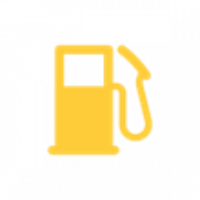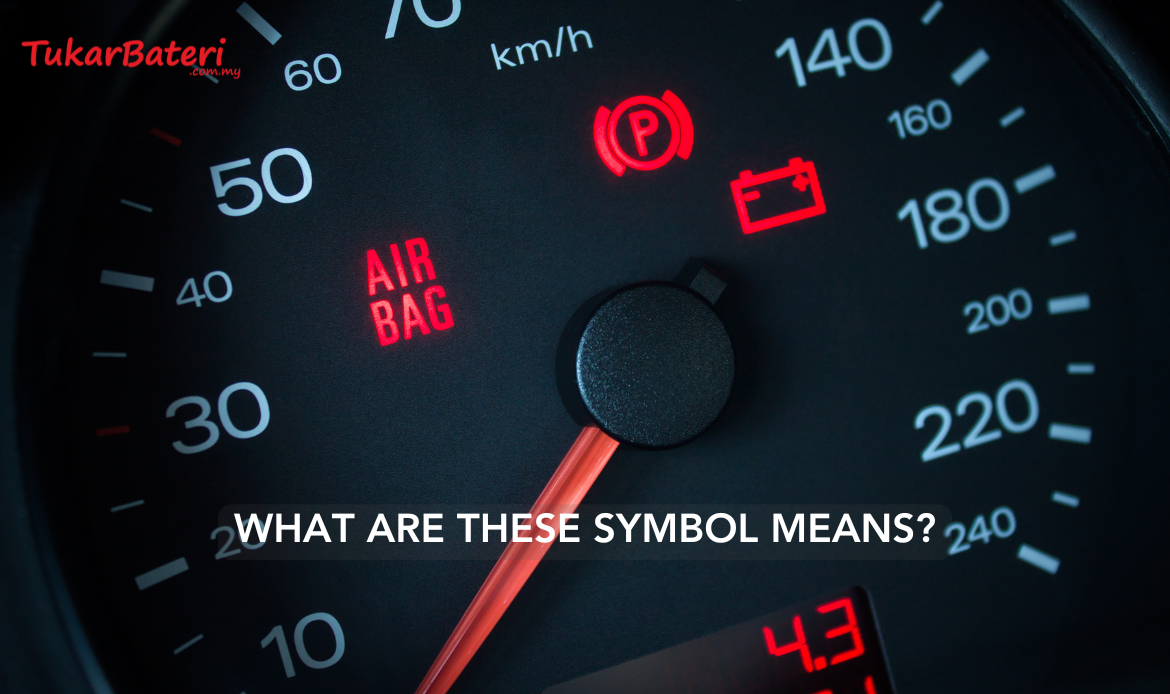Table of Contents
- Car Dashboard Symbols – We Need to Know!
- Hand Brake Symbol
- Engine Symbol
- Battery Symbol
- ABS (Anti-Lock Braking System) Symbol
- Traction Control System (TCS) Symbol
- Oil (Fuel) Symbol
- Seat Belt Symbol
- Engine Temperature Symbol
- Engine Oil Symbol
- Electric Power Steering (EPS) Symbol
- SRS Airbag Symbol
- Car Door Symbol
- Eco Mode Symbol
- Conclusion
Car Dashboard Symbols – We Need to Know!
As car users, it’s almost guaranteed that at some point, you’ve glanced at your vehicle’s dashboard and noticed the array of symbols illuminated in various colors. These symbols, ranging from simple indicators of car functionality to critical warnings about potential issues, play a crucial role in the overall driving experience.
However, a common challenge many drivers face is the lack of understanding or familiarity with what each symbol signifies. This gap in knowledge isn’t due to a lack of interest but rather the sheer complexity and variety of symbols that can appear, combined with the infrequency of their appearance which makes them hard to remember.
Despite this, it’s imperative for car users to grasp at least the fundamental meanings of these illuminated symbols to properly identify and address the issues their vehicles might be encountering. These symbols serve as the car’s method of communicating its health and operational status to the driver, offering insights into everything from engine health to the activation of safety features, and even to routine matters such as fuel levels and turn signal operation.

1. Hand Brake Symbol
What it looks like: The car handbrake symbol, usually a red circle with an exclamation mark (!) inside
What it means: Means your parking brake is currently engaged. This is a safety reminder to disengage it before attempting to drive.
What to do: Try to disengage the handbrake. Once you disengage the handbrake, the symbol on your dashboard should turn off. If it stays lit, there might be an issue with your parking brake system, and it’s best to consult a mechanic.
2. Engine Symbol
What it looks like: The engine symbol, often an orange engine light or a silhouette of an engine block, is a general warning light on your car’s dashboard
What it means: The engine light doesn’t necessarily point to a major issue, but it does signify a problem somewhere in the engine management system. This system consists of various sensors, the engine control unit and various emissions control components.
A lit engine light could indicate a minor problem like a loose gas cap, faulty sensor, or emissions issue. However, it could also signify something more serious like failing spark plugs, malfunctioning catalytic converter, or problems with fuel delivery.
What to do: While the engine light is a warning, it doesn’t necessarily mean your car will grind to a halt immediately. If the car seems to be running fine (no strange noises, vibrations, or loss of power), you can continue driving to a safe location, preferably home or a repair shop.
Recommended to take your car to a mechanic or service center. They can use a diagnostic scan tool to retrieve trouble codes stored by the ECU, which will pinpoint the specific
3. Battery Symbol
What it looks like: The battery symbol on your car’s dashboard, usually a red rectangle with positive and negative terminals, or simply a silhouette of a battery.
What it means: If the battery symbol lights up, it means the battery isn’t receiving enough power to maintain its charge. This could be due to a failing alternator, a faulty voltage regulator, loose or corroded battery connections, or even a problem with the wiring in the charging system.
What to do: A lit battery symbol is a warning that your car’s electrical system isn’t functioning properly. Continued driving can drain your battery completely, leaving you stranded. Try to find a safe place to pull over as soon as possible. Turn off the engine and avoid unnecessary electrical loads like headlights or air conditioning. If you’re not comfortable troubleshooting the problem yourself, call for roadside assistance or a tow truck to get your car to a mechanic.
4. ABS (Anti-Lock Braking System) Symbol
What it looks like: The ABS (Anti-Lock Braking System) symbol on your car’s dashboard is typically an orange circle with the letters “ABS” inside.
What it means: The ABS symbol indicates a malfunction in the Anti-Lock Braking System. This system plays a crucial role in preventing wheel lockup during hard braking situations, especially on slippery roads. It helps maintain steering control and allows for shorter stopping distances.
If the ABS symbol lights up, it means the ABS is not functioning properly. This could be due to various reasons, such as Faulty sensor, Hydraulic system issue, Damaged wiring and Low brake fluid.
What to do:
- While a malfunctioning ABS is a concern, it doesn’t necessarily mean your car’s brakes have completely failed. Your standard brakes should still function, although without the added benefit of ABS.
- It’s vital to have your car inspected by a mechanic as soon as possible. They can use diagnostic tools to pinpoint the specific problem within the ABS system.
5. Traction Control System (TCS) Symbol
What it looks like: The Traction Control System (TCS) symbol on your car’s dashboard is usually a yellow icon representing a car with squiggly lines beneath it
What it means: If the TCS symbol illuminates on your dashboard, it means that the system has detected a loss of traction and is working to adjust the power and braking of the wheels to improve traction.
What to do: Reduce your speed and avoid sudden movements or harsh braking, as these can further decrease traction. Once the road conditions improve, the TCS symbol should turn off. If it remains illuminated, you may need to have your vehicle inspected by a mechanic.

6. Oil (Fuel) Symbol
What it looks like: The oil (fuel) symbol typically looks like an oil can or a gas pump and indicates the level of oil or fuel in your vehicle.
What it means: If the symbol is low or blinking, it means that your vehicle is running low on oil or fuel.
What to do: Best to stop at the nearest gas station and fill up. It is important to regularly check the oil and fuel levels in your vehicle to avoid running out and potentially damaging the engine.
7. Seat Belt Symbol
What it looks like: The symbol can look like a person wearing a seat belt or a seat belt buckle
What it means: If the symbol illuminates on your dashboard, it means that someone in the vehicle is not wearing their seat belt.
What to do: Buckle Up! It is important to always wear a seat belt while driving or riding in a vehicle to reduce the risk of injury in case of an accident.
8. Engine Temperature Symbol
What it looks like: It typically looks like a thermometer inside a water droplet
What it means: If the symbol is illuminated on your dashboard, it means that the engine is overheating.
What to do: Pull over safely as soon as possible and turn off the engine. Let it cool down for at least 20 minutes before checking the coolant level.
Here’s a quick tip: never open the radiator when the engine is hot as the coolant can be under pressure and cause scalding.
9. Engine Oil Symbol
What it looks like: The symbol typically looks like an oil can with a drop of oil dripping from it
What it means: When illuminated, this light indicates an issue with your engine’s oil system. There are two main reasons you might see the engine oil light on: Low Oil Pressure or Oil Change Reminder.
What to do: Pull over safely as soon as possible and turn off the engine. Check your oil level using the dipstick. If the oil level is good, or adding oil doesn’t turn off the light, don’t drive the car further. There could be a more serious problem like an oil leak or a faulty sensor. You’ll need to have your car towed to a mechanic for diagnosis and repair.
10. Electric Power Steering (EPS) Symbol
What it looks like: The symbol typically looks like a steering wheel with an exclamation mark next to it.
What it means: When this light illuminate, it means there’s a malfunction with your car’s electric power steering system. Unlike hydraulic power steering systems that use fluid, EPS systems rely on electric motors to assist with steering. So, if you see the EPS light on, there’s no need to check fluid levels. A lit EPS light because of electrical Issue or battery problem
What to do:
- Try turning the car off and on again. Sometimes a simple restart can reset the system and clear the light.
- If the light stays on, drive cautiously to a safe location. You should still be able to steer the car, but it will require more effort, especially at lower speeds.
- Get your car checked by a mechanic as soon as possible. They can diagnose the cause of the EPS malfunction and perform the necessary repairs.
11. SRS Airbag Symbol
What it looks like: It looks like an airbag or a person in a seat with an airbag deployed
What it means: When this light illuminate, it means there’s a potential issue with your car’s airbag system. The airbag system is a crucial safety feature designed to inflate rapidly in a collision to cushion passengers and minimize injuries. A lit SRS light signifies that the system might not function properly in an accident. Here’s what a lit SRS light might indicate: faulty airbag, seatbelt sensor malfunction, clock spring problem or low battery voltage.
What to do: It is important to have your vehicle inspected by a mechanic as soon as possible to address any potential issues with the airbag system.
12. Car Door Symbol
What it looks like: The symbol typically looks like a car with an open door or a door ajar.
What it means: This symbol is a warning that one (or more) of your car doors, or possibly the trunk or hood, is not properly closed.
What to do: Pull over safely and visually inspect all the doors, trunk, and hood. Make sure they are completely closed and latched. Closing the door firmly or re-latching the trunk/hood can resolve the issue.
13. Eco Mode Symbol
What it looks like: The symbol typically looks like a leaf or a green “Eco” label.
What it means: When lit, it indicates that Eco Mode is either activated (if your car has a physical button for it) or that you’re currently driving in a way that optimizes fuel efficiency. Here’s what Eco Mode generally means: improved fuel economy, reduced engine power, optimized transmission shifting and potential adjustments to other systems.
What to do: The symbol might be simply indicating you’re driving fuel-efficiently. No action is needed in this case. If your car has a dedicated Eco Mode button, you can toggle it on or off based on your preference. If you need quick acceleration for merging or overtaking, you can temporarily deactivate Eco Mode.
Conclusion
Understanding car dashboard symbols is like knowing your car’s language. They tell you when something is wrong, like if it’s sick (engine issues), hunger (low fuel), or needs a check-up (maintenance warning). Paying attention to these symbols can help you avoid accidents, save money by fixing small problems before they get big, and keep your car running smoothly. It’s all about ensuring you and your car stay safe and happy on the road.
Call Us Now!!!
Free Car Battery Delivery and Installation
We Cover:
Klang Valley | Penang | Terengganu | Johor | Kelantan | Malacca | Perak


